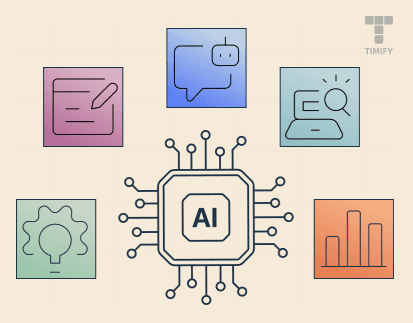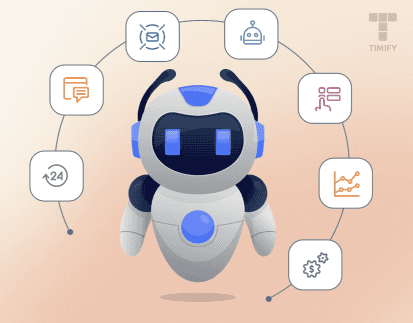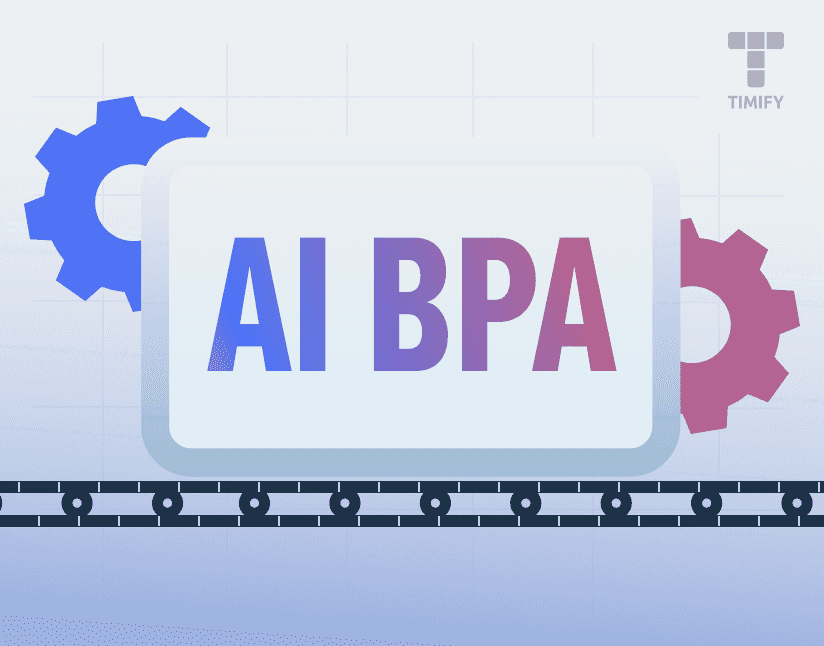

TIMIFY
TIMIFY is an appointment scheduling and resource management software for teams and enterprises
Traditional business process automation (BPA) systems have one major flaw: they lack intelligence.
It’s just like you’re “automating” your car’s movement by strapping a brick to its gas pedal. This might prove effective for maintaining a constant speed on a straight road. But what happens when you encounter a curve or traffic? The “automation” fails miserably.
That’s exactly how traditional BPA systems work. They only follow rigid flows and algorithms. As such, they cannot learn, adapt, or even help you make data-driven decisions.
Fortunately, you can overcome this limitation by integrating AI into your business process automation efforts. Today’s guide will get you up to speed on everything you need to know about AI business process automation.
Let’s start from the top:
What is business process automation?
Business process automation is the strategic use of technology to automate rule-based, repetitive, and time-consuming complex tasks within your business activities.
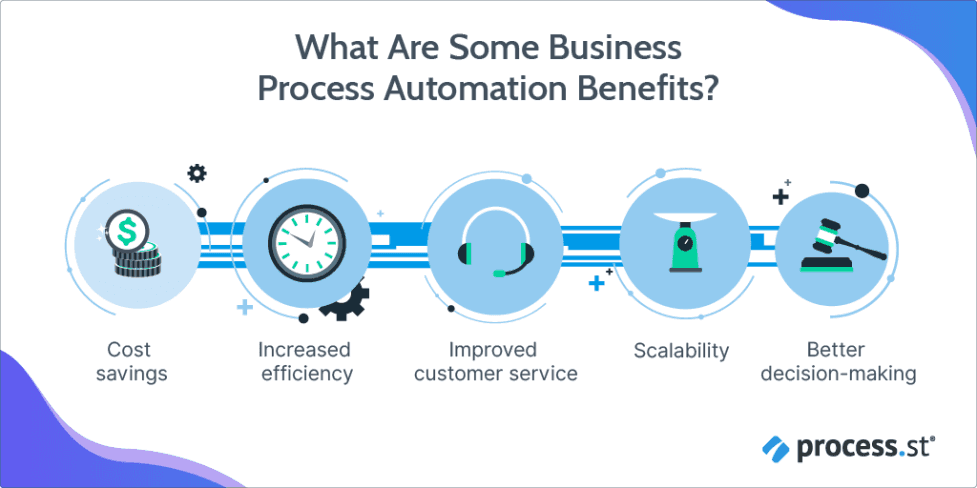
Let’s take your business's social media presence, say on TikTok, for instance. Traditionally, managing an account and growing TikTok followers might involve several manual operations—posting at specific hours of the day and interacting with followers.
With TikTok automation solutions like Planly or Crowdfire, you can simply schedule your social media posts to go live at specific times. That’s not all; you can even automatically respond to basic comments based on pre-written messages. This way, you’d free up more time to handle other important tasks, like content creation.
What is AI?
AI, which stands for Artificial Intelligence, is a collection of advanced technologies that allow machines to simulate human intelligence and cognitive functions. This includes a wide range of things like learning, problem-solving, and decision-making.
Speaking of the technologies backing AI, there are two important ones.
One is machine learning systems (ML). Machine learning algorithms allow AI systems to learn patterns and relationships from pre-existing data. So, when they’re faced with new data or complex processes, they can "think" and then make predictions or recommendations.
The other is natural language processing (NLP). This involves using language models to help machines understand, interpret, and generate human-like language.
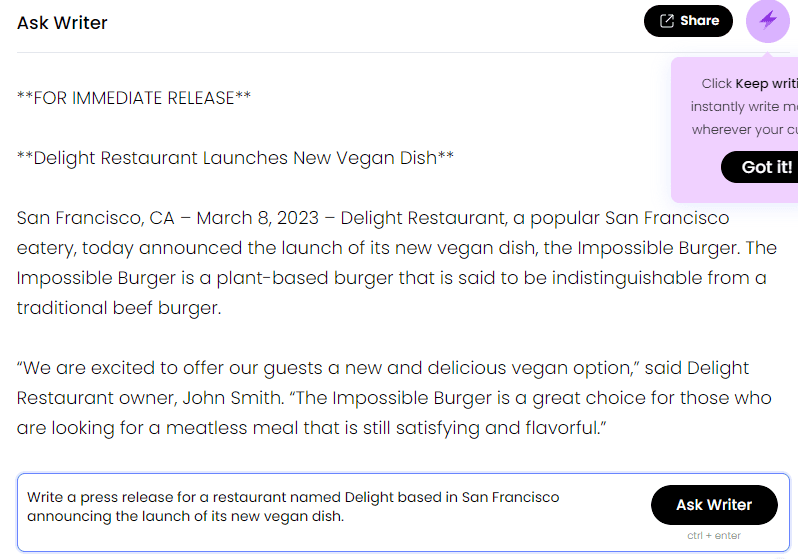
This technology plays a particularly crucial role in developing AI-driven chatbots and text-based generative AI tools like Writer above.
What is AI business process automation?
AI business process automation (AI-BPA), or intelligent automation, involves using AI with your automation tools to optimise several business tasks. So, you’re not only automating repetitive tasks but also adding a layer of intelligence to this automation with artificial intelligence technology.
Think of restaurant employee scheduling as an example. Sure, you can use a traditional BPA tool to automatically allocate tasks to employees to some extent. But for that to work seamlessly, you still have to do a lot of work yourself.
For instance, you still have to manually analyse the strengths, weaknesses, and performances of employees before giving them tasks.
However, with AI-driven automation, human intervention would become very minimal. Through machine learning, the tool can learn about your employee’s past performances. Then, it figures out the best employees for certain tasks and hours and allocates the tasks accordingly.
And if something unexpected happens—assume an employee calls in sick unexpectedly—you don’t have to panic. The tool can help you find another employee with similar performance metrics and adjust the schedule accordingly.
Benefits of AI business process automation
AI-powered business process automation can help your business in several ways, starting with cost savings. That’s because adding AI to your existing business automation software system further reduces the need for human workers.
So, naturally, your operational expenses, like labor costs, go down too. And when your operational costs are reduced, you'll have extra funds to direct into business growth and innovation.
Moving on, another benefit of AI business process automation is that it can help you handle workplace information overload. This can be a real headache in business, literally. In fact, 80% of workers reported that they feel stressed daily due to information overload.
How can AI-BPA solve this issue? Well, with AI, your workers don’t have to process much data anymore. The system can automatically analyse the data and draw actionable inferences from it without any hassle.
So, let’s take your customer support automation, for instance. You won’t have to worry about analysing the information coming from your chatbot interactions.
AI can collect and analyse these customer queries and interactions over time. Then, it gives you digestible insights into your customers' sentiments, preferences, and most pressing pain points.
Challenges of AI business process automation
AI business process automation can be a rosy journey (or maybe not). This will depend on how well you’ve prepared for certain potential issues.
Your first reality check would be resistance from employees. And who can blame them? After all, no one wants to lose their wages. A majority of the 3000 American workers surveyed by Checkr said they feel the adoption of AI at work can lead to pay cuts, if not job losses. The sentiment cuts across different generations:
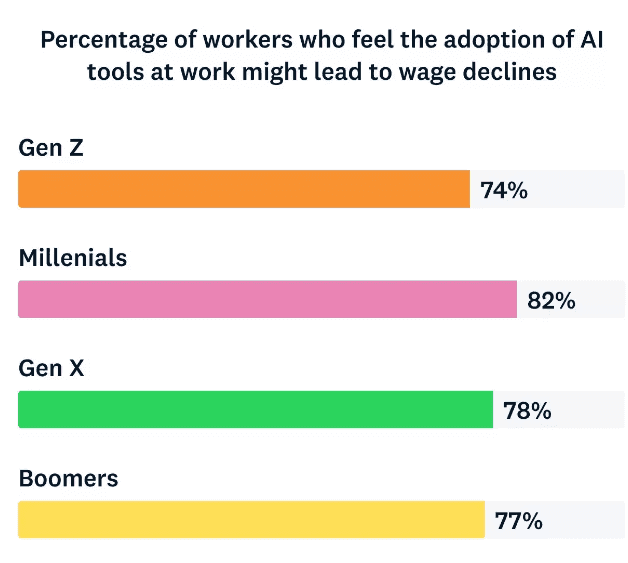
But you can overcome this challenge by taking the time to upskill and reskill your employees. Essentially, focus on equipping them with the skills they need to work with AI and not be replaced by it.
That aside, note that AI deals with a lot of sensitive data. So, you need to brace yourself for privacy and security challenges. You don’t want a data breach that exposes your customer information due to vulnerabilities in your AI system.
So, what’s the solution? Give serious thought to your cybersecurity measures from Day 1 of the implementation of your AI business process automation. And this shouldn’t be a one-time thing. Make sure you constantly update your security protocols and access controls.
Mind you, your employees are probably handling an AI workflow for the first time. Therefore, it’s necessary to educate them about cyber hygiene practices so none of them become a point of cyberattack. You can even create a company policy to this effect.
Last but not least, implementing AI-BPA solutions for all your repetitive and rule-based business processes can come with hefty upfront price tags. So, finances might be a challenge too.
That's why you have to be smart about your budget. If you’re a small business working with a lean budget, you can start small and scale gradually. You can pilot-test AI solutions for particular areas of your business processes before going for a full-fledged implementation.
Most importantly, you also want to opt for vendors with transparent pricing and good track records to get the most out of your investment.
Future of AI business process automation
AI business process automation isn’t static and is far from being finished. As long as there are technological advancements in AI, you can expect more innovations and trends to surface. Let’s just cover a few of them.
For starters, most AI BPA solutions available today can only automate one part of your business operations. For instance, an appointment scheduling automation tool can’t work for inventory management. But that will change soon.
With hyper-automation, you’ll see AI-powered automation tools that can seamlessly automate and integrate as many business processes as possible. This promises businesses a greater level of agility, efficiency, and cost reduction.
Secondly, AI-BPA systems are on the path to becoming more democratised. This simply implies that they’ll be more accessible and affordable to every business, regardless of size or AI expertise.
The primary way this will happen is through the emergence of more low-code AI solutions. With these solutions, businesses can easily build their own proprietary AI solutions to manage their automation.
And lastly, human workers will still play an important role in the future of AI business process automation. They’ll still be required to perform tasks that require a higher level of empathy, creativity, and judgment, and, of course, govern AI systems.
Examples of AI in business process automation
We already saw how AI in business process automation can play a pivotal role in key areas like employee scheduling and customer support. Now, let’s see some other examples of how exactly AI can streamline your business automation.
Let’s start with the recruitment process. A brilliant example of AI-BPA in action is the AI-powered application tracking system (ATS). This tool can scan resumes and cover letters automatically to find keywords or skills you’re looking for. Then, it filters out the applicants that don’t match.
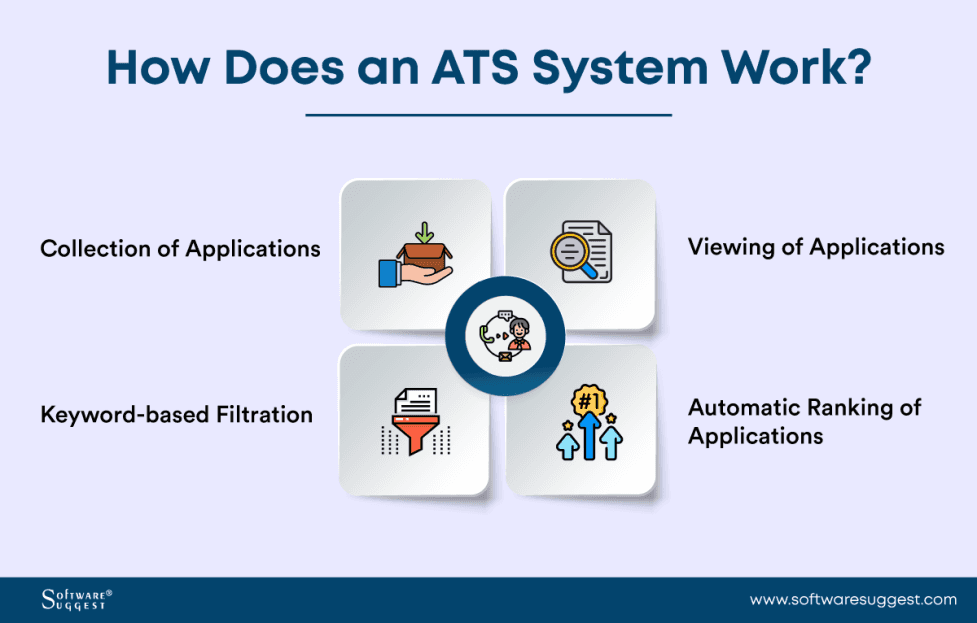
Some of these ATS tools also come with in-built NLP-powered chatbots. This means that they can understand the nuances of human language. Thus, you can use them to conduct initial candidate interactions and pre-screening interviews. This saves your human resources team even more time.
Recruitment aside, you can also use AI in your order fulfillment automation. Let’s say someone placed an order. Based on learned data and previous interactions, AI can verify the order and ensure no fraudulent activities are going on.
From there, your automation can then check if the order is available. If not, AI can also analyse the customer's buying behaviour and recommend other products they might like. This simple gesture can go a long way toward boosting your sales.
Speaking of sales, you can also directly integrate AI into your sales process automation tools. This gives you more leeway to analyse historical data and customer interactions and assign scores to leads based on their likelihood to convert. This way, you can focus more effort on people who are more likely to buy from your business.
Conclusion
Chances are you’re already using traditional business automation technologies to automate routine tasks, and you're getting decent results. But if you truly want to get the most out of these systems, pair them with artificial intelligence (AI).
This way, you won’t be stuck with a rigid, rule-based automation tool but with something that can adapt according to your changing business needs. That’s AI-BPA or intelligent process automation.
Moreover, with AI, it's easier to reduce human error and achieve better operational efficiency. You'll also obtain valuable insights that can help you make strategic decisions.
This guide covered everything you need to understand about using AI in your business automation efforts, including the key benefits, challenges, and examples.
Now, over to you. When implementing, don’t forget that you can always start small and then scale gradually.
All the best!

About the author
TIMIFY
TIMIFY is a global leader in scheduling and resource management software-as-a-service (Saas). It is known for its sophisticated, secure, and customisable enterprise-focused technology.
Related articles

